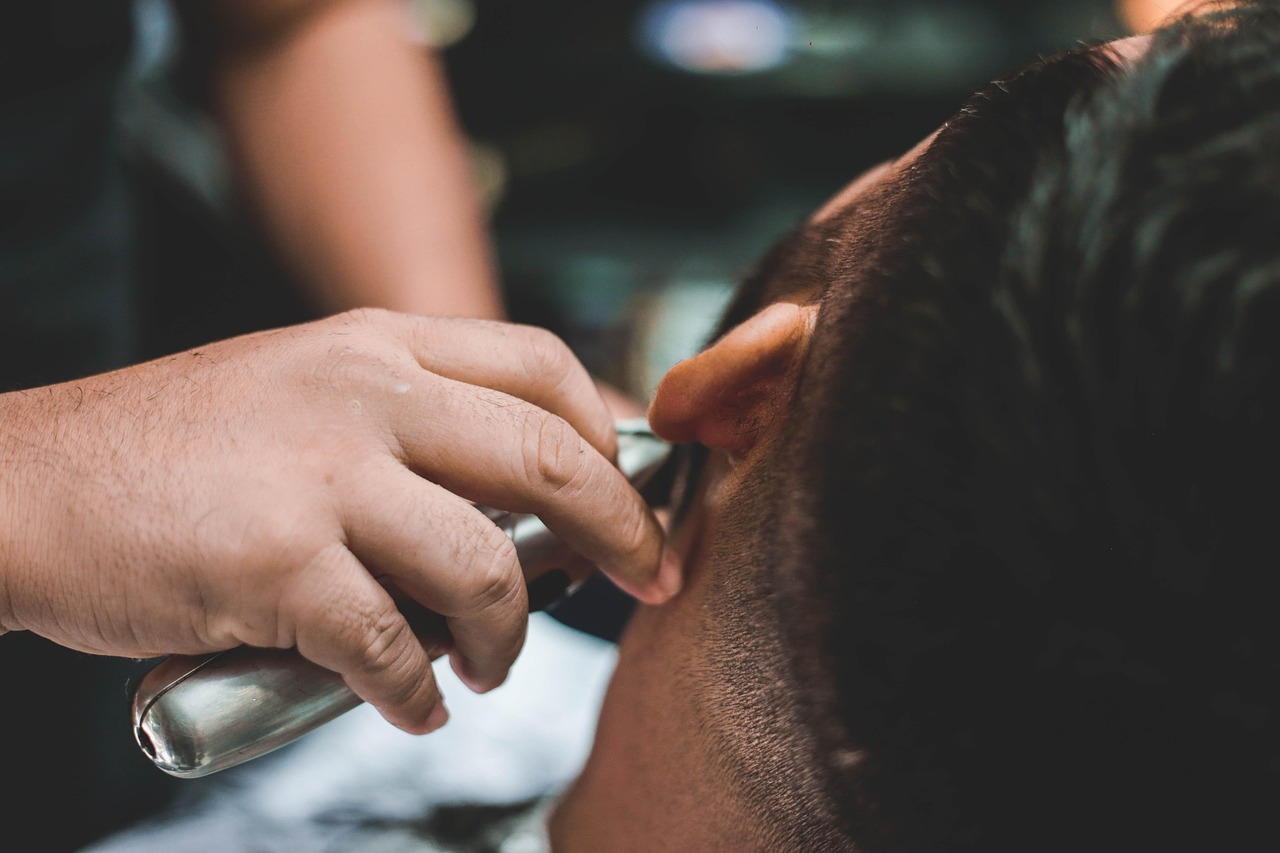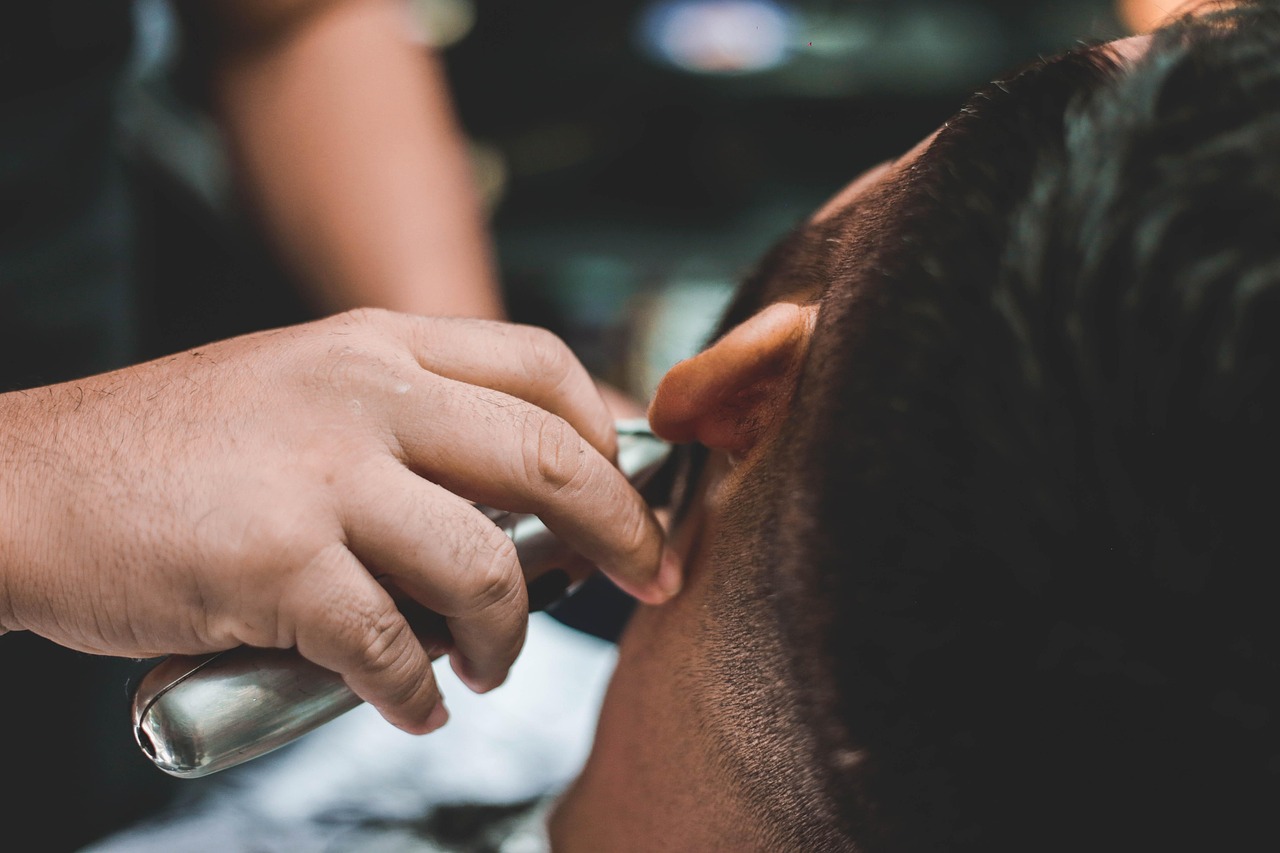This article delves into the innovative techniques and practices employed by hair transplant clinics to minimize scarring and side effects, ensuring optimal results for patients seeking hair restoration.
Understanding the various hair transplant techniques is essential for patients. Two of the most popular methods are Follicular Unit Extraction (FUE) and Follicular Unit Transplantation (FUT). Each method has distinct implications for scarring. FUE is known for its minimally invasive approach, which significantly reduces scarring compared to traditional methods.
Modern hair transplant clinics leverage advanced technology to enhance precision and reduce trauma to the scalp. Robotic systems and precision instruments are now commonplace, allowing for more accurate follicle extraction and implantation. This technological advancement plays a crucial role in minimizing both scarring and potential side effects.
Post-operative care is equally important in preventing scarring. Patients are advised to follow aftercare instructions meticulously. This includes avoiding strenuous activities and protecting the scalp from sun exposure. Additionally, various topical treatments are available to aid in scar management post-surgery, promoting better healing and reducing the visibility of scars.
During the initial consultation, clinics assess individual patient needs and expectations. This personalized approach allows for tailored treatment plans that address specific hair loss patterns while minimizing risks. Setting realistic goals is crucial, as it helps manage patient expectations regarding the outcomes of the procedure.
In conclusion, as hair transplant techniques continue to evolve, clinics are committed to innovating methods that significantly reduce scarring and side effects. The future of hair restoration looks promising, with advancements leading to safer and more effective solutions for individuals seeking to restore their hair.
| Technique | Scarring | Recovery Time |
|---|---|---|
| FUE | Minimal | 1-2 weeks |
| FUT | Moderate | 2-4 weeks |
- Consultation: Essential for personalized treatment.
- Aftercare: Crucial for minimizing scarring.
- Technology: Enhances precision in procedures.

Understanding Hair Transplant Techniques
When it comes to hair restoration, the choice of technique can significantly impact the outcome, particularly in terms of scarring. Two of the most prevalent methods are Follicular Unit Extraction (FUE) and Follicular Unit Transplantation (FUT). Each of these techniques has its unique approach, benefits, and potential drawbacks, making it essential for patients to understand them thoroughly.
Follicular Unit Extraction (FUE) is a minimally invasive technique that involves extracting individual hair follicles directly from the scalp. This method is known for its reduced scarring compared to traditional hair transplant methods. Because FUE does not require a linear incision, the resulting scars are typically small, dot-like marks that are less noticeable. Patients who opt for FUE often experience quicker recovery times and less discomfort during the healing process.
On the other hand, Follicular Unit Transplantation (FUT) involves removing a strip of scalp from the donor area, which is then dissected into individual follicular units for transplantation. While FUT is often more effective for achieving a higher density of hair in a single session, it does leave a more prominent linear scar. Understanding these implications is crucial for patients considering FUT, especially those who wear their hair short.
Both techniques have their merits, and the choice largely depends on individual circumstances, including hair type, the extent of hair loss, and personal preferences regarding scarring. Consulting with a qualified hair transplant specialist can help patients make informed decisions tailored to their specific needs.
In summary, understanding the different hair transplant techniques, such as FUE and FUT, is fundamental for anyone considering hair restoration. Each method carries its own set of advantages and potential drawbacks, and making an informed choice can lead to a more satisfying outcome in the hair restoration journey.

The Role of Advanced Technology
In the realm of hair restoration, advanced technology plays a pivotal role in enhancing the efficacy and safety of hair transplant procedures. Clinics are increasingly adopting cutting-edge tools and techniques to not only improve the accuracy of the surgeries but also to minimize the trauma experienced by patients during and after the procedure.
- Robotic Systems: These systems are designed to assist surgeons in performing hair transplants with remarkable precision. The use of robotics allows for meticulous follicle extraction, reducing human error and ensuring that hair follicles are harvested at the optimal angle and depth.
- Precision Instruments: Modern clinics utilize specialized instruments that are engineered to minimize scalp damage. These tools are less invasive than traditional methods, leading to a decrease in scarring and a more comfortable recovery experience.
- 3D Imaging Technology: This technology helps in mapping the patient’s scalp and hair loss pattern accurately. By creating a detailed model, surgeons can plan the transplant more effectively, ensuring that the results look natural and aesthetically pleasing.
Furthermore, the integration of artificial intelligence in hair transplant clinics aids in analyzing patient data and predicting outcomes. This data-driven approach allows for personalized treatment plans that cater to individual needs, which is essential for achieving optimal results.
As technology continues to evolve, the future of hair restoration looks promising. Patients can expect even less invasive procedures with improved results, less visible scarring, and reduced side effects. The combination of advanced technology and skilled professionals in hair transplant clinics is setting new standards in the industry, making hair restoration a more accessible and effective solution for those facing hair loss.
Follicular Unit Extraction (FUE) Explained
Follicular Unit Extraction (FUE) is a cutting-edge hair restoration technique that has transformed the landscape of hair transplantation. Unlike traditional methods, FUE is a minimally invasive procedure that focuses on the extraction of individual hair follicles. This approach significantly reduces the risk of scarring, making it an appealing option for many patients.
The process begins with the careful harvesting of hair follicles from a designated donor area, typically the back of the head. Using specialized tools, the surgeon extracts these follicles one by one, ensuring minimal trauma to the surrounding tissue. This precision is what sets FUE apart from older techniques, such as Follicular Unit Transplantation (FUT), which involves removing a larger strip of skin and can lead to more noticeable scarring.
One of the primary benefits of FUE is its reduced recovery time. Patients often experience less discomfort and can return to their daily activities more quickly than with traditional methods. Additionally, the absence of a linear scar allows individuals to wear shorter hairstyles without the fear of visible scarring, enhancing their confidence and self-esteem.
Moreover, FUE is suitable for various hair types and is especially beneficial for those with finer hair or those who have previously undergone hair transplant procedures. The versatility of this technique makes it a favored choice among both patients and surgeons.
While FUE has numerous advantages, it is essential for potential candidates to consult with a qualified hair restoration specialist. Each individual’s hair loss pattern and overall health must be assessed to determine the most effective treatment plan. This personalized approach ensures optimal results and minimizes the potential for complications.
In conclusion, Follicular Unit Extraction represents a significant advancement in hair restoration, offering patients a less invasive option with numerous benefits. As techniques continue to evolve, FUE remains at the forefront, providing hope and effective solutions for those seeking to regain their hair.
Benefits of FUE
Benefits of Follicular Unit Extraction (FUE)
Follicular Unit Extraction (FUE) has gained significant popularity in the realm of hair restoration due to its numerous advantages. This innovative technique not only minimizes scarring but also brings a host of other benefits that make it a preferred choice for many individuals seeking to regain their hair.
- Minimized Scarring: One of the most notable benefits of FUE is the reduction in visible scarring. Unlike traditional hair transplant methods that involve larger incisions, FUE extracts individual hair follicles, resulting in tiny, dot-like scars that are often undetectable.
- Quicker Recovery Times: Patients undergoing FUE typically experience faster recovery compared to other methods. Most individuals can return to their normal activities within a few days, making it a convenient option for those with busy lifestyles.
- Less Postoperative Discomfort: FUE is associated with reduced pain during and after the procedure. The minimally invasive nature of the technique means that patients often report less discomfort, allowing for a more pleasant recovery experience.
- Natural-Looking Results: Because FUE allows for precise extraction and implantation of hair follicles, the results tend to look more natural. This is crucial for individuals who desire a seamless blend with their existing hair.
- Versatility: FUE can be performed on various types of hair loss, making it a versatile option for patients. Whether dealing with male or female pattern baldness, FUE can be tailored to meet individual needs.
In conclusion, the benefits of FUE extend well beyond just reduced scarring. With quicker recovery times, less postoperative discomfort, and the potential for natural-looking results, it is no wonder that many individuals are choosing FUE as their method of hair restoration. As technology continues to advance, the effectiveness and appeal of FUE are likely to grow even further.
Limitations of FUE
When considering Follicular Unit Extraction (FUE) for hair restoration, it is essential to recognize that, despite its many advantages, this technique may not be suitable for all individuals. Understanding the limitations of FUE can help potential candidates make more informed decisions regarding their hair transplant options.
- Scalp Conditions: Patients with certain scalp conditions, such as psoriasis or dermatitis, may experience complications during the FUE procedure. These conditions can affect the health of the hair follicles and the overall outcome.
- Hair Density: Individuals with low hair density or fine hair may not achieve optimal results with FUE, as the technique relies on extracting and transplanting individual follicles. In such cases, Follicular Unit Transplantation (FUT) might be more effective.
- Donor Site Limitations: The success of FUE largely depends on the availability of healthy donor hair. If the donor site has been previously compromised, it may limit the number of follicles that can be harvested.
- Cost and Time: FUE is often more expensive and time-consuming than traditional methods. Patients should consider their budget and the time they can invest in the procedure and recovery.
- Skill of the Surgeon: The outcome of an FUE procedure is heavily reliant on the surgeon’s experience and skill. Inadequate technique can lead to poor results, including uneven hair growth and visible scarring.
- Patient Expectations: Unrealistic expectations can lead to dissatisfaction with the results. It’s crucial for patients to have a clear understanding of what FUE can achieve and to discuss these expectations with their surgeon.
In conclusion, while FUE offers numerous benefits for hair restoration, it is vital for prospective patients to consider these limitations. Consulting with a qualified specialist can provide personalized insights and help determine the best approach for individual hair restoration needs.
Follicular Unit Transplantation (FUT) Overview
Follicular Unit Transplantation (FUT) is a highly regarded hair restoration technique that has been utilized for many years. This method involves the surgical removal of a strip of scalp from the donor area, typically located at the back of the head. The harvested strip is then dissected into individual follicular units, which are subsequently transplanted into the balding or thinning areas of the scalp. Understanding the implications of FUT, especially regarding scarring, is crucial for potential candidates considering this method.
One of the most significant concerns associated with FUT is the potential for scarring. The nature of the procedure means that a linear scar will be left at the donor site. This scar can vary in visibility depending on several factors, including the skill of the surgeon, the technique used, and the patient’s healing process. Patients should be aware that while FUT can yield a high density of hair in the recipient area, it does come with the trade-off of a scar that may require careful management.
To mitigate scarring, many clinics employ advanced techniques and tools. For instance, some surgeons utilize trichophytic closure, where the edges of the scalp are aligned in such a way that hair grows through the scar, helping to conceal it. Additionally, following proper post-operative care is essential. Patients are advised to avoid strenuous activities and follow specific aftercare instructions to promote optimal healing.
In conclusion, while FUT is an effective hair restoration option for many, it is vital to understand the potential for scarring and the importance of selecting an experienced surgeon. By being informed and prepared, candidates can make educated decisions about their hair restoration journey.

Post-Operative Care for Minimizing Scarring
Post-operative care is a crucial factor in ensuring optimal healing and minimizing visible scars after a hair transplant procedure. By adhering to specific guidelines and practices, patients can significantly enhance their recovery and reduce the likelihood of scarring. This section outlines essential practices that patients should follow to promote effective healing and achieve the best possible results.
- Follow Aftercare Instructions: One of the most important steps in post-operative care is to strictly follow the aftercare instructions provided by the clinic. These guidelines are tailored to the individual’s procedure and recovery needs, ensuring the best outcomes.
- Keep the Area Clean: Maintaining cleanliness around the transplant area is vital. Patients should gently cleanse the scalp as instructed to prevent infection, which can lead to increased scarring.
- Avoid Sun Exposure: Protecting the scalp from direct sunlight is essential, especially in the initial healing phase. Wearing a hat or using sunscreen can shield the area and help minimize discoloration and scarring.
- Manage Physical Activity: Patients should avoid strenuous activities and heavy lifting for a few weeks post-surgery. Excessive sweating can irritate the scalp and hinder the healing process, potentially leading to scarring.
- Stay Hydrated and Maintain Nutrition: Proper hydration and a balanced diet support the body’s healing processes. Nutrients play a vital role in skin repair and can contribute to minimizing scars.
- Consider Topical Treatments: After the initial healing period, patients may explore topical treatments recommended by their healthcare provider. These products can aid in scar management and promote healthier skin.
In conclusion, proper post-operative care is fundamental in reducing the risk of scarring after a hair transplant. By following these essential practices, patients can enhance their recovery experience and achieve optimal healing results.
Importance of Following Aftercare Instructions
After undergoing a hair transplant, the cannot be overstated. These guidelines, provided by the clinic, are designed to optimize the healing process and enhance the overall results of the procedure. By adhering to these instructions, patients can significantly reduce the chances of complications and ensure that their newly transplanted hair thrives.
Firstly, proper aftercare helps in minimizing scarring. The healing process is delicate, and any deviation from the recommended care can lead to visible scars or uneven hair growth. Patients are advised to avoid strenuous activities, excessive sun exposure, and touching the transplant area, as these can negatively impact healing.
Furthermore, the prescribed medications and topical treatments play a crucial role in the recovery process. These products are formulated to reduce inflammation, promote healing, and prevent infection. Skipping these treatments can lead to discomfort and potentially hinder the success of the transplant.
Additionally, maintaining a clean scalp is vital. Patients should follow the washing instructions carefully, as improper washing techniques can lead to the dislodgment of grafts or the development of infections. A gentle approach is often recommended, using mild shampoos and lukewarm water to cleanse the area without causing trauma.
Regular follow-ups with the clinic are also essential. These appointments allow healthcare professionals to monitor the healing process, address any concerns, and make necessary adjustments to the aftercare plan. Patients should not hesitate to reach out to their clinic if they experience unusual symptoms or have questions about their recovery.
In conclusion, adhering to aftercare instructions is crucial for achieving the best possible outcomes after a hair transplant. By following the guidelines provided by their clinic, patients can enhance their healing, minimize scarring, and ultimately enjoy the full benefits of their hair restoration journey.
Managing Scarring with Topical Treatments
After undergoing surgery, scar management becomes a crucial aspect of the healing process. Topical treatments and products can significantly aid in enhancing recovery and reducing the visibility of scars. This section will explore various options available to patients, ensuring they are well-informed about their choices.
- Silicone Gel Sheets: These sheets are often recommended for their effectiveness in flattening and softening scars. They create a protective barrier that hydrates the scar tissue, promoting healing.
- Topical Silicone Gel: Similar to silicone sheets, topical gels are easy to apply and can be used on scars of various sizes. Regular application can lead to noticeable improvements over time.
- Hydrating Creams: Creams containing ingredients like hyaluronic acid and vitamin E can help keep the scar tissue moisturized, which is essential for optimal healing.
- Natural Oils: Essential oils, such as rosehip oil and lavender oil, are known for their skin-repairing properties. They can be massaged into the scar area to promote regeneration.
- Prescription Treatments: In some cases, dermatologists may recommend prescription creams that contain steroid or retinoid compounds to reduce scar formation and improve skin texture.
It’s essential for patients to consult with their healthcare provider before starting any topical treatment. This ensures that the chosen products are suitable for their specific skin type and condition. Furthermore, combining topical treatments with proper post-operative care can enhance results and lead to a smoother healing process.
In conclusion, managing scarring effectively requires a multifaceted approach. By utilizing the right topical treatments and following professional advice, patients can significantly improve the appearance of their scars and boost their confidence as they heal.

Consultation and Personalized Treatment Plans
A comprehensive consultation process is essential for hair transplant clinics aiming to deliver optimal results tailored to each patient’s unique needs. By engaging in detailed discussions with patients, clinics can identify specific hair loss patterns, medical histories, and personal expectations. This personalized approach significantly minimizes the risk of scarring and side effects, ultimately leading to more satisfactory outcomes.
During the initial consultation, clinics often assess the following factors:
- Hair Loss Pattern: Understanding the type and extent of hair loss helps in devising a suitable treatment strategy.
- Medical History: Reviewing past medical conditions or treatments can influence the choice of techniques used.
- Patient Expectations: Discussing what patients hope to achieve allows clinicians to set realistic goals and manage expectations effectively.
By tailoring treatment plans based on these assessments, clinics can select the most appropriate hair transplant techniques—be it Follicular Unit Extraction (FUE) or Follicular Unit Transplantation (FUT). Each method has its own implications for scarring, and understanding these can empower patients to make informed decisions.
Furthermore, the integration of advanced technologies, such as robotic systems, enhances the precision of hair transplant procedures. This not only reduces trauma to the scalp but also aids in achieving natural-looking results with minimal scarring. Clinics that prioritize these innovative techniques often report higher patient satisfaction rates.
In conclusion, the significance of a thorough consultation process cannot be overstated. It lays the foundation for creating personalized treatment plans that address individual needs, thereby minimizing the risk of scarring and side effects. As the field of hair restoration evolves, ongoing advancements in technology and techniques will continue to enhance the effectiveness of personalized care.
Assessing Patient Needs and Expectations
is a fundamental aspect of the hair restoration process. Understanding each patient’s unique hair loss pattern and individual expectations is crucial for clinics aiming to provide effective and personalized solutions. This section delves into the methods clinics use to assess these factors, ensuring optimal results for every patient.
To begin with, clinics typically conduct a comprehensive initial consultation. During this session, patients are encouraged to discuss their hair loss history, including the onset, progression, and any previous treatments they may have tried. This information helps clinicians to identify the underlying causes of hair loss, whether genetic, hormonal, or environmental.
Moreover, clinics often utilize advanced diagnostic tools, such as scalp analysis and hair density assessments. These tools allow specialists to visualize the patient’s scalp condition and hair follicle health, providing valuable insights into the most suitable treatment options. By understanding the specific hair loss pattern, clinicians can tailor their approach to suit the patient’s needs.
Another essential element is setting realistic expectations. During the consultation, clinics guide patients in understanding what outcomes can be achieved based on their unique circumstances. This includes discussing the potential results of different treatment options, recovery times, and any possible side effects. By managing expectations, clinics help patients feel more informed and confident in their decisions.
Furthermore, patient feedback plays a significant role in refining treatment plans. Clinics often encourage ongoing communication, allowing patients to express any concerns or desires as their treatment progresses. This collaborative approach not only enhances patient satisfaction but also fosters trust between the clinic and the patient.
In conclusion, assessing patient needs and expectations is vital in the hair restoration journey. By employing thorough consultations, advanced diagnostic tools, and open communication, clinics can develop personalized treatment plans that align with each patient’s unique situation, ultimately leading to successful hair restoration outcomes.
Setting Realistic Goals
during the consultation process is a fundamental aspect of the hair transplant journey. It serves to manage patient expectations effectively and ensures that individuals are well-informed about the potential outcomes of their procedures.
Clinics play a crucial role in guiding patients through this process. Initially, they assess the patient’s unique hair loss condition and discuss various treatment options available. This assessment includes evaluating the degree of hair loss, the quality of donor hair, and the patient’s overall health. By understanding these factors, clinics can help patients set achievable goals that align with their individual circumstances.
During consultations, clinics often employ visual aids, such as before-and-after photos, to illustrate what patients can realistically expect. This visual representation is vital in helping patients grasp the potential results of their chosen method, whether it be Follicular Unit Extraction (FUE) or Follicular Unit Transplantation (FUT). By setting these realistic expectations, patients can avoid disappointment and feel more confident in their decision-making process.
Moreover, clinics also address the potential side effects of the procedures. By informing patients about possible outcomes, such as temporary swelling or discomfort, clinics can prepare them for the recovery process. Open discussions about these aspects foster a sense of trust and transparency between the patient and the clinic.
In conclusion, setting realistic goals during consultations is essential for ensuring patient satisfaction and successful outcomes in hair restoration. By guiding patients through understanding achievable results and addressing potential side effects, clinics can create a more positive experience and help individuals make informed decisions about their hair restoration journey.

Conclusion: The Future of Hair Restoration
As the field of hair restoration advances, clinics are consistently developing innovative techniques aimed at minimizing scarring and side effects. The evolution of hair transplant methods not only enhances the aesthetic outcomes for patients but also improves overall safety and satisfaction. This article delves into the future of hair restoration, highlighting emerging trends and technologies that promise to revolutionize the industry.
- Technological Innovations: The integration of advanced technologies, such as robotic-assisted surgery and 3D imaging, is transforming the precision of hair transplant procedures. These innovations allow for more accurate follicle extraction and placement, significantly reducing the risk of visible scarring.
- Regenerative Medicine: The use of stem cell therapy and platelet-rich plasma (PRP) treatments is gaining traction. These techniques not only promote hair growth but also aid in healing and tissue regeneration, further minimizing potential side effects.
- Personalized Treatment Plans: Clinics are increasingly adopting a patient-centered approach, tailoring treatment plans to individual needs. This customization helps in addressing specific concerns regarding scarring and recovery.
Furthermore, the future holds promise for non-invasive and minimally invasive options that could emerge as alternatives to traditional hair transplant methods. With ongoing research and development, patients can expect more effective solutions that prioritize both aesthetic results and patient safety.
In conclusion, the future of hair restoration is bright, with continuous advancements paving the way for safer, more effective options. As clinics embrace innovation and prioritize patient care, individuals seeking hair restoration can look forward to improved outcomes and enhanced overall experiences.
Frequently Asked Questions
- What is the difference between FUE and FUT hair transplant techniques?
FUE (Follicular Unit Extraction) involves extracting individual hair follicles, which results in minimal scarring. On the other hand, FUT (Follicular Unit Transplantation) removes a strip of scalp, which can lead to more noticeable scars. Each method has its pros and cons, so it’s essential to discuss your options with a specialist.
- How can I minimize scarring after a hair transplant?
To minimize scarring, it’s crucial to follow the aftercare instructions provided by your clinic. This may include keeping the area clean, avoiding strenuous activities, and possibly using topical treatments that promote healing. Proper care can significantly enhance your recovery and reduce scar visibility.
- Are there any side effects associated with hair transplants?
Like any surgical procedure, hair transplants can have side effects, including swelling, redness, and temporary discomfort. However, these are typically mild and resolve within a few days. Discussing potential side effects with your doctor can help set realistic expectations.
- How long does the recovery process take?
The recovery process varies for each individual but generally takes about 7 to 14 days for initial healing. Most patients can return to their normal activities within a week, but full results can take several months as the hair follicles settle and grow.
- Can all patients undergo hair transplant procedures?
Not everyone is a suitable candidate for hair transplants. Factors such as the extent of hair loss, scalp condition, and overall health can influence eligibility. A thorough consultation with a qualified specialist will help determine the best approach for your specific situation.












